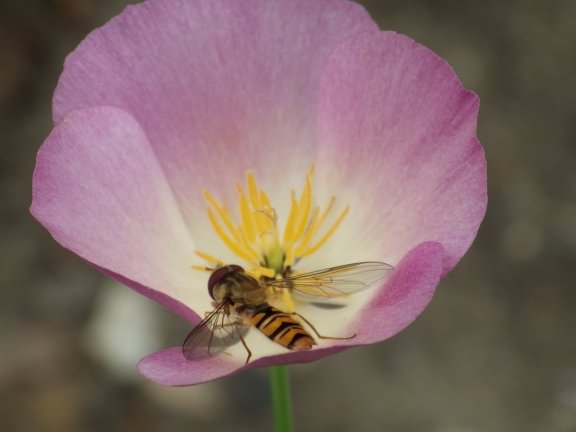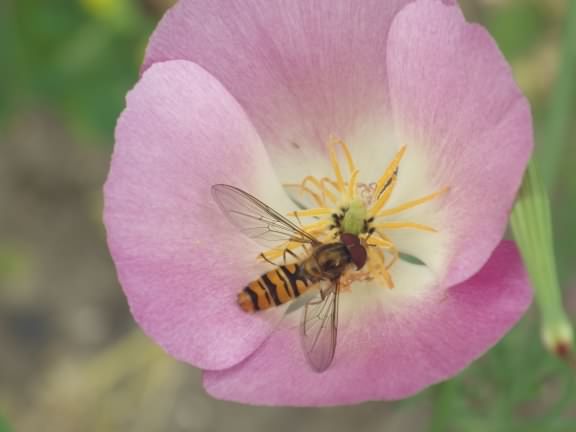
Male

Male on California Poppy ‘Purple Gleam’

Photo ©2009 Quartl
Photos ©2019–
Click any photo for a larger image
Marmalade Hoverfly - Episyrphus balteatus
Family - Syrphidae
The Marmalade hoverfly is around 9–12mm (0.35–0.45in) long with distinctive orange and black banding. The third and fourth dorsal tergites have a secondary thinner black band that is notched in the center giving it the appearance of a "moustache", and the thorax has three feint grey longitudinal stripes. It is faintly hairy overall. This colour patterning may be a wasp mimic to deter predation by other species. It is a common hoverfly regularly seen almost throughout the year in the UK and Europe, North Asia, North Africa, in many areas including gardens, parks, rough grass areas, fields, disturbed ground and areas where larger flat topped flowering species with dense flower heads like Wild Carrot, Hogweed and Cow Parsley are found, visiting the flowers for pollen and nectar. It can also be seen on Tansy, Ragwort.
They can often form dense aggregations with local population numbers boosted by European migrants. The larvae are terrestrial and are voraciously aphidophagous, I.E. feeding on a variety of aphids, whilst the adults are nectar feeders. The adults hibernate through the winter but may emerge on warmer days. Males can be identified by their holoptic eyes where the left and right compound eyes touch at the top of their heads, the males are also excellent hoverers.
 Male |
 Male on California Poppy ‘Purple Gleam’ |
 Photo ©2009 Quartl |
Photos ©2019– Click any photo for a larger image | ||
Site design ©1999– Brickfields Country Park - Privacy -